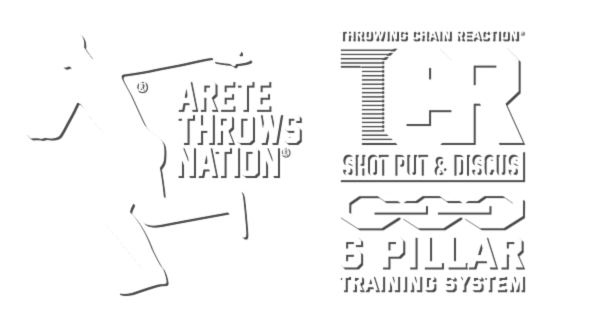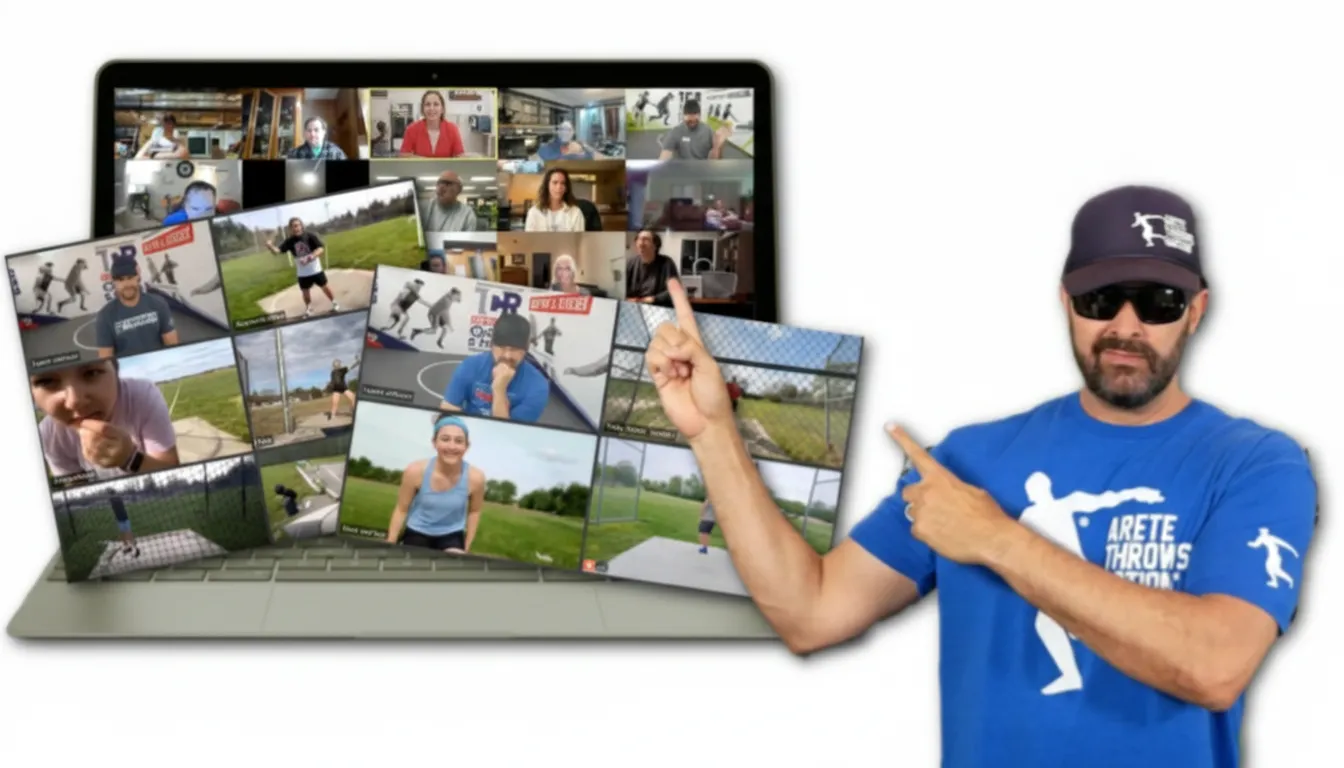Strength Training Strategies that Hits the Target 🎯
Oct 15, 2022
I always look forward to this time of year when I get to work with my athletes & we train on the critical fundamentals in the weight room- this is when the magic happens.
Starting your training in the fall, as opposed to the spring, is especially enjoyable since it gives you 5-6 months to build a stronger, faster, and more athletically dynamic athlete…. and 5- 6 months is a huge chunk of time!
If you give yourself less time to train in the weight room in preparation for the up-coming track season, it tends to put a high pressure mindset into an athlete… and a coach.
In my experience, when athletes come to train with me just before the track season opens, they get into the weight room with an "OMG it's happening - RIGHT NOW!” mindset.

“Let me see how strong I am…. RIGHT NOW!”
“Let me see how far I can throw.. RIGHT NOW!”
“Even though I haven’t been training since last year, I want to see new PRs RIGHT NOW!”
But if you start your throws training in the fall, there is no need to have this high stress mentality … fall training takes this down about 5 levels.
Today I want to share with you the specific types of workouts you can start using today!
How you structure a Strength Training program is a huge factor in determining the desired outcome… which is typically, a bigger, stronger, smarter, more dynamic, and better moving thrower/athlete.
NOT JUST STRONGER!
If you only focus on stronger, you are setting up a limited program with limited results.
First of all, you need access to the basic gym/ weight room tools:
- Barbells
- Dumbbells,
- Kettlebells,
- Benches,
- and squat racks- or at least some variation of that
Secondly, although there are many different ways to go about structuring a strength training program, I think we can all agree that it must be centered around 4 main factors:
- Knowledge,
- Strength,
- Throwing Technique,
- and Programming
I went over these 4 factors in a previous blogs...
All training variables, when planning out your strength training program, rely on these 4 factors- this frees up your time and mental space to focus on building bigger results. ;-)
I look at Strength Programming like building a skyscraper…
In order to have a killer skyscraper, you have to have a deep, solid foundation to hold the weight of all the floors you are going to stack on top of each other.
If you skimp on any part of the foundation, use crappy materials & take any shortcuts, it’s going to be weak and eventually fall down.

In the TCR Strength Training & Programming course, I refer to this as GPP (General Physical Preparation)
GPP is universally known in the Strength and Conditioning world as a preparatory phase for strength training: sports conditioning, flexibility work, general strength work and so on.
This is why fall training is so important to a successful throwing season… you are providing time to insert this phase of a training block in your strength training program where you are preparing the athlete for higher intensity more specialized work later.
… not smashing all at once in the beginning of the season! 🚫 YIKES.
Once you start setting up your 4 factors in your Strength Training Program, and begin to work on the fundamental techniques of weight training in the fall, you are providing the time for technical development with minimal load…
… this allows your throwers to improve at a 3x to 5x rate and avoid unnecessary stress and injury.
In a couple of weeks, I’ll be launching a new program called: RESTORE - a multi-phase training program that is designed to give you BIG success! 🤘
The 3 core programs that will start off are:
RESTORE • FOUNDATION • BUILD
The debut of the RESTORE program will be released in just a couple of weeks.
And the focus will be on the first 3 week phases: posture, mobility and lifting technique.
It will incorporate the basics of work capacity, this is where GPP comes in. In this RESTORE program you will have access to workouts in the proper phases of a GPP training block. 🔥
Below is a structure of the Restore phase 1 workout and then the structure changes in phase 2 which happens in week 4 ….
|
Warm-Up (Mobility and posture oriented) |
|
Lift 1 with Specific WU |
|
Lift 2 with Specific WU |
|
Met con |
|
Accessory GPR Circuit |
|
Cool Down |
As you can see there's some mobility and posture specific movements to restore the body’s alignment, mobility, stability, and work on lifting technique.
So let’s break it down….
🔥 Warm up: Athletes need to start moving in a position of strength. Seems pretty simple yet, it has so much impact. Never skip out on warm ups.
🏋🏻♀️ Main Lifts1 & 2: Rather than jump into traditional squats, bench, cleans and jerks, you’ll want to do variations and look at unilateral type movements- meaning you’ll do lunges instead of squats.
You want to have your focus on the upper body and lower body.
Again the goal in this phase is to restore quality of movement work on things that are going to enhance stability, joint strength, ligament strength, and work the smaller muscles in the kinetic chain in an effort to avoid any potential compensation issues that the athlete may have.
😓 Met Con (Metabolic Conditioning): Your goal here is to get in shape & get the heart rate up anaerobically to improve work capacity. Remember when you have a higher work capacity, you can train at a higher level for a longer period of time.
Even if you have a short period of time to train, being in shape- work capacity- allows the strength training to be at a higher level- which yields the most results in a shorter period of time..
During this particular phase mix in short anaerobic high-intensity metabolic conditioning via weight training and body movement to push the heart rate up, break a sweat, increase lung capacity, and get the athletes in shape.
💪 1x20 GPR Circuit: Uber sports scientist Doctor Michael Yesis created the 1x20 method- putting together roughly 12 exercises that are going to target more muscles. The 20 reps create a good level of fatigue without overly exhausting the athlete. The emphasis here is what I refer to as GPR (Gross Posture Rebalancing).
…and just like that name says, you want to focus on the upper body movements that are going to be focusing on restoring gross posture:
- can the athlete pass the eyeball test?
- do they stand up straight
- Are the shoulders back
- is their head up not protruding forward like they're looking at their cell phone or playing a video game?.
This 1x 20 GPR circuit allows the athlete to focus on the lift to get 20 completed correct reps. If the athlete fails to get all 20 reps at the target weight. They stay at that weight until they can complete all 20 reps with good technique and then they increase the weight on the next workout.
This is why we do this for a few weeks so that we can really train a lot of those key things. ( we talk about this a lot in our strength course)
🧘🏾 Cool down
Here, you’ll want to do 5 minutes of stretching and a couple minutes on some Mobility work. For example incorporate a 1 minute squat hold sitting in the heels while shifting left to right to work on knee range of motion and ankle mobility. Follow that up with three sets of 10 ankle circles left and right and this is a really easy basic way to cool down.
So to recap, the week looks like this:
- Monday Lower body Focus
- Tuesday Upper Body Focus
- Wed Mobility, recovery
- Thursday Lower body
- Friday Upper body
- Sat- optional Bonus Mobility day. ( repeat Wed)
This workout should take 60 to 75 minutes.
However, in the beginning as I teach the basics to my newer athletes, I spend roughly 2 hours on these early parts teaching athletes how to move properly- this will be a big part of your goal at this point in the season.
For the Arete Nation squad of throwers, this approach to the weight room has been proven year after year to avoid burnout, injury and technical errors that transfer directly into the ring and cause limitations in an athlete achieving big goals & PRs.
If I just provide an athlete with a lift, the athlete will typically do the vast majority of the movement incorrectly.
They’ll increase the weight to the point where the technique is even worse, causing a lot of unnecessary stress. The end result is typically just a really sloppy lift that's not producing the type of results you want.
Remember weightlifting is just like throwing- crappy technique is going to produce crappy results.
Young athletes (high school & collegiate)are like new tires on a car.
You can peel out, hit the brakes, and drive them hard and they'll seem okay…
… But what you're actually doing is wearing out the tires faster.
Just because the tires are new, doesn't mean they should be abused.
… just because younger athletes can handle more abuse and recover more easily due to youth being on their side, doesn't make sloppy programming or exercise execution acceptable.
And hey, you Master level throwers out there…. You’re a tire with more miles on it!
Use your life experience & wisdom.
You should know that trying to hit the weight room like you did in “your day” is going to end badly for you. There’s a whole other approach to hitting the weight room with max effectiveness and getting killer results without causing injury - which just keeps you away from the sort you clearly have a passion for.
Take enough time to develop or re-establish your working capacity and technical base.
To wrap this all up…
You want to restore movement, restore range of motion right and are restoring the alignment of the posture in preparation for the next phase which is called FOUNDATION.
In the next article we'll talk about how to start incorporating the TCR Throwing Fundamentals into your weight room program.
In the Arete Throws Club here in Phoenix, I will coach my athletes to start attacking some TCR technical work in the weight room…
… and by technical work, I mean throwing technical work.
I have the athletes working through the TCR 6 Pillar drills & progression using resistance bands, but without the implement, or actually throwing.
Strength is absolutely critical to throwing success.
Stay tuned
Coach Johnson

